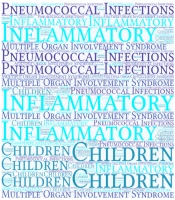Dear Editor,
Since early October 2022, we had to deal with some critically ill patients we had never dealt with. These cases were already identified in several cities in Iran and even in the world. The typical history of the majority of the cases was as follows: they were previously healthy children, mostly aged 1 - 10 years, and initially presented with flu-like symptoms such as fever, cough, and myalgia for 2 - 3 weeks before admission. After a transient recovery, symptoms flared up again. In the second phase of the illness, they experienced fever, general sense of ill-being, cough, and dyspnea. They were referred to several physicians’ offices and received oral antibiotics and over-the-counter prescriptions. Finally, they sought medical attention due to worsening condition and were referred to our hospital. During the entire admission time, they were critically ill and had substantial respiratory distress.
They had variable degrees of lung involvement in chest imaging. An interesting finding was that a significant number of the cases had massive unilateral pleural effusion with or without empyema as well as white lung appearance in chest X-rays (CXR), which led to chest tube insertion and tissue plasminogen activator (tPA) administration in many cases. Most of them required intensive care, and some underwent intubation and mechanical ventilation. Vasoactive drugs were also prescribed for several patients. The clinical presentation had a rapid progressive nature, which we had not experienced in the pediatric population or even during the COVID-19 pandemic. The majority of these patients also had other organ involvements, especially increased cardiac biomarkers along with low systolic ejection fraction in favor of myocarditis, coagulopathy, and life-threatening bleeding, raised liver enzymes and acute hepatitis, and also increased level of creatinine with or without anuria resulting in dialysis. Otitis, adenitis, and meningitis were also observed in few cases. This multiorgan involvement was remarkably similar to what was already seen in multisystem inflammatory syndrome in children (MISC) following COVID-19 infection (1, 2).
Nasopharyngeal PCR for influenza, RSV, and COVID-19 viruses was checked in the course of laboratory investigation, and positive result was obtained for Influenza virus in few patients. The pleural fluid analysis showed considerable number of white blood count (WBC) and lactate dehydrogenase (LDH) in favor of exudative pattern. Another interesting finding was that pleural or blood cultures were positive in a great number of patients with Pneumococci or other organisms. Further evaluation revealed Streptococcus pneumoniae serotype 19-A in some samples, which is believed to cause invasive pneumococcal disease (3). On December 2022, World Health Organization (WHO), as well as the Centers for Disease Control and Prevention in the United States (CDC) also alarmed about an increase in invasive group A streptococcal infections with fatalities among children in Europe and United States (4, 5). On the other hand, some of our patients had high levels of ferritin and D-dimer; and despite appropriate antibiotic therapy, inflammatory markers and proper clinical response were not decreased. These findings along with multiorgan involvement highlighted the role of a post-infectious immune dysregulation rather than an isolated infectious process.
Unfortunately, two of these patients who had crucial cardiac involvement died during the studied period. Seemingly we faced a viral respiratory infection and possibly bacterial superinfection which triggered cytokine storm and resulted in multiple system involvement. Although administering initial treatment using antiviral or antibiotic drugs is inevitable when the symptoms of infection are present, anti-inflammatory treatment, including corticosteroids, should be considered early in the course of the disease, like inflammatory disorders seen in COVID-19 infection (6). To our experience, response to corticosteroid therapy was favorable and may have shortened the hospital length of stay.
In the final stages of our study, several patients and many challenges were left untreated and unresolved. Therefore, our research team continued collecting precise data about this unprecedented phenomenon, which would hopefully be published soon.
